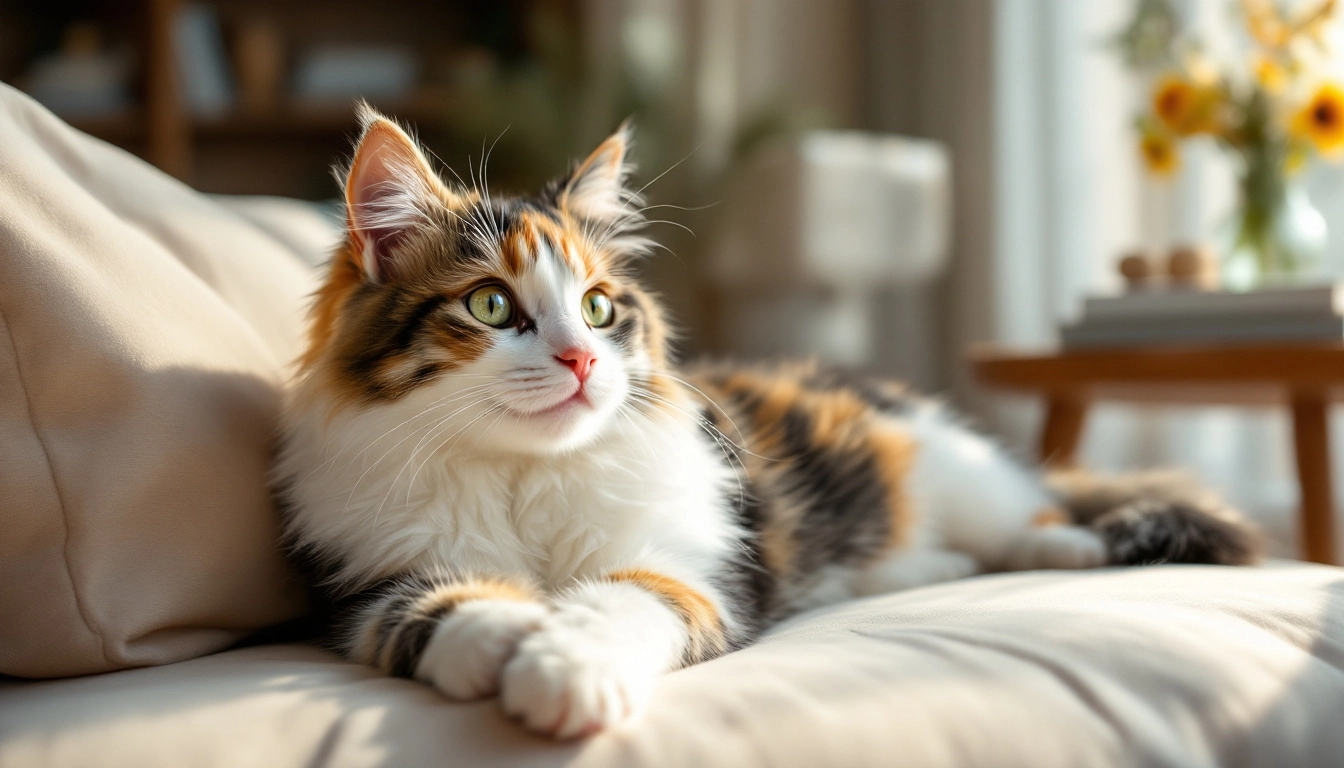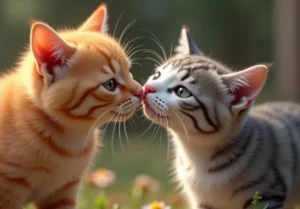Why does your cat keep pawing at you? It’s one of those curious behaviors that can leave you both amused and puzzled. You’re not alone in wondering what this feline gesture means!
Cats paw at their humans as a way to communicate their needs, whether it’s love, attention, or even a simple nudge for food. But it goes deeper than just seeking a snack or a cuddle. The reasons intertwine with their instincts and personality, revealing a rich tapestry of feline behavior you might not have considered before. Stick around, as there’s a fascinating exploration into your cat’s pawing antics just waiting for you below.

Why do cats paw at their humans?
Cats have a unique way of expressing their needs and emotions, and pawing is one of their quintessential behaviors. At its core, your kitty might be trying to get your attention. Whether they want a scratch behind the ears, an invitation to play, or to signal it’s mealtime, pawing serves as a direct line of communication.
Another interesting layer to this behavior is rooted in instinct. When kittens nurse from their mothers, they knead with their paws to stimulate milk flow. This behavior, known as kneading, can carry over into adulthood, too. So, when your cat paws at you, they might just be tapping into their inner kitten, seeking comfort and reassurance from their human companion.
Lastly, don’t overlook the idea of territoriality. Cats often use their paws to mark their territory. By pawing at you, they’re claiming you as part of their space, reinforcing their bond and signifying that you’re part of their family unit. It’s a sweet nod to their need for connection.
Is my cat trying to show affection?
Absolutely, pawing can be one of the clearest signs that your cat feels a connection with you. This behavior often indicates affection and attachment—consider it their way of saying “I love you, human.” When they gently paw at you, it can resemble the kneading they did as kittens, evoking feelings of safety and warmth.
Moreover, there’s a social aspect to pawing. Cats often use this gesture to solicit your attention or initiate interaction, be it playtime or cuddle time. It’s their way of inviting you into their world, almost like an affectionate nudge.
To dive a bit deeper, watch for context and body language. If your cat is purring, rubbing against you, or following you around while pawing, it’s crystal clear they’re in a loving mood. On the flip side, if they’re pawing aggressively, it might signal overstimulation or frustration. Being in tune with these nuances will help you understand your feline friend better.
Cats thrive on positive interactions, so if you recognize that your cat’s pawing signifies their affection, reciprocate! Engaging them in a play session or simply giving them a good scratch can reinforce that bond, making them feel cherished and understood.
Could my cat be seeking attention?
Pawing can be your cat’s subtle way of saying, “Hey, notice me!” Cats have their own languages, and they often use physical gestures to communicate. If your furry friend is gently tapping or kneading your lap or hands, it’s usually a sign they’re craving affection or engagement. It’s their version of waving hello or nudging you for a scratch behind the ears.
Consider the timing: Does your cat paw at you when you’re busy or preoccupied? This behavior could ramp up as they compete for your attention. Here are a few reasons they might be reaching out:
- Bonding: Your cat associates pawing with positive interactions. It’s like saying, “I want to be close to you.”
- Curiosity: Cats are inherently curious creatures. Pawing might stem from their interest in what you’re doing.
- Hunger: If they’re pawing around mealtime, they could simply be reminding you it’s time for their dinner!
Pay attention to their body language. A relaxed posture usually means they’re just looking for love, while a tense body could indicate nerves. Engaging with them during these moments not only strengthens your bond but also helps meet their social needs.
What if my cat is feeling anxious?
Pawing can also be a signal that your cat is feeling a bit uneasy. If their behavior shifts from gentle taps to frantic scratching, it may indicate stress or anxiety. Think about what’s going on in their environment; changes, even subtle ones, can trigger these responses.
For anxious cats, pawing can serve several purposes:
- Self-soothing: Similar to how some people fidget, your cat may paw at you to self-soothe and reduce their anxiety.
- Searching for comfort: They might be looking for physical reassurance. If they paw at you while attempting to snuggle close, they could be seeking security.
- Displacement behavior: Sometimes, if a cat is feeling overwhelmed or conflicted (like when meeting new visitors or unexpected noises), they may paw us as a redirected behavior.
Creating a calm environment can help. Make sure they have spaces to retreat to, and consider using calming products like pheromone diffusers or anxiety wraps. Also, enriching their surroundings with interactive toys or cozy hideouts can reduce stress levels and keep them relaxed.
When they become more vocal or active with their paws, it’s worth monitoring to figure out what might be causing it. Adjusting your approach based on their comfort can help your beloved pet feel more secure.
Does pawing relate to their hunting instincts?
Pawing is deeply intertwined with your cat’s hunting instincts. Think back to how cats in the wild operate. Their ancestors often used their paws to feel out their environment or to test the waters before pouncing on prey. When your cat paws at you, they might be engaging that instinctive behavior—checking you out, asserting their presence, or simply interacting with what they perceive as part of their territory.
Interestingly, this action can also be related to a mix of curiosity and a desire for interaction. Cats are naturally inquisitive creatures, and pawing can signify that they want your attention or are interested in a play session. It’s their way of saying, “Hey, I’m here, and I want to interact!” This behavior can especially be observed during moments of excitement or when you’re engaged in something they find intriguing.
Additionally, some cats might develop a habit of pawing as a way to communicate their needs, like signaling hunger or wanting to play. So, while they might not be plotting a hunting strategy, that little pawing gesture is a reminder of their wild roots and their need for connection.
What does kneading mean in cats?
Kneading is a behavior that holds a special place in feline interaction. Often referred to as “making biscuits,” it’s when your cat rhythmically pushes their paws in and out against a soft surface, like your lap or a blanket. This behavior stems from kittenhood, where kneading stimulates milk flow from their mother. It’s comforting, nurturing, and ultimately, it becomes a soothing, stress-relieving activity for adult cats.
But why do they still knead as adults? For many cats, it’s a sign of affection and a way to express contentment. When your cat kneads on you, they’re marking you with their scent, claiming you as their own. This action shows they feel safe and relaxed in your presence, a sign of deep trust in your bond.
Additionally, a unique angle to consider is environmental stress. Cats that knead may be attempting to self-soothe. If there are changes in their environment—like new people, pets, or other stressors—paws kneading can become more frequent as they seek comfort. Keeping your cat’s environment stable and offering them spots to knead can help maintain their emotional well-being.
Are there differences between pawing and scratching?
Understanding the difference between pawing and scratching can shed light on your cat’s mindset and needs. Pawing is often a gentle, repetitive motion where your cat taps or kneads you with their paws. This behavior is typically linked to affection, seeking attention, or even a desire for comfort—almost like a way for them to get cozy and express their love.
On the flip side, scratching serves a different purpose. It’s usually more vigorous and involves using their claws to dig into surfaces. Cats scratch to keep their claws healthy, mark territory, and stretch their muscles. If your cat’s scratching is mostly aimed at furniture or carpet, it’s a sign they’re asserting ownership of their space or relieving stress. When you see your cat pawing at you versus scratching the sofa, it’s a clear indicator that they’re in a more affectionate mood rather than merely exercising their instincts.
What recent studies say about cat behaviors?
Recent research has cast a fascinating light on cat behaviors, including pawing. One study published in the Applied Animal Behaviour Science journal revealed that cats often engage in pawing when they’re seeking social interaction or reassurance from their human companions. This means that when your cat is pawing at you, they may not just be asking for attention—they might also be looking to strengthen the bond you share.
Moreover, another interesting finding from a study by researchers at the University of Edinburgh showed that cats use their paws to communicate their emotional state. Cats utilize different pawing patterns; for instance, a gentle kneading motion often signifies comfort and trust, while a more insistent pawing might signal hunger or a need for playtime.
These insights highlight the importance of paying attention to your cat’s body language and the context in which they’re pawing. The more you tune into these behaviors, the better you can respond to their needs and create a more nurturing environment for your feline friend.
What can I do if my cat paws too much?
Managing a cat’s pawing behavior can be quite a task, especially if it interrupts your daily routine. Understanding the reason behind excessive pawing—whether it’s for attention, comfort, or play—will guide you in handling it without discouraging this natural instinct.
One effective strategy is to redirect their energy. If your cat starts pawing you while you’re busy, try offering a toy they can bat at or a scratching post nearby. This keeps them entertained and occupied without feeling ignored.
Routine is essential too. Establish a playtime schedule to give your cat focused attention. Use interactive toys—like feather wands or laser pointers—to satisfy their hunting instincts. This structured time can help minimize their urge to paw at inconvenient moments since they’ll have an outlet for their energy.
You might also want to explore softening pads on their paws or giving them a comfy perch nearby where they feel secure and can observe you. Providing a cozy space may lessen the need for physical contact and pawing.
Utilizing positive reinforcement techniques can help as well. When your cat paws gently, reward them with treats or gentle affection. This reinforces the behavior you want to encourage while subtly discouraging excessive pawing that feels demanding.
Lastly, consider environmental enrichment. Add climbing trees or interactive feeders to stimulate their curiosity and keep them engaged. A well-stimulated cat is likely to vent their energy elsewhere rather than persistently pawing at you. Balancing attention, engagement, and redirection can nurture a happy and communicative relationship without overwhelming you.
Alex, a passionate animal lover, has experience in training and understanding animal behavior. As a proud pet parent to two dogs and three cats, he founded AnimalReport.net to share insights from animal experts and expand his knowledge of the animal kingdom.





